There's less than two days left for new and returning HBO Max subscribers to make the most of a 20% price cut on the service. Whether you sign up for its With-Ads or Ads-Free plan, the limited time only HBO Max deal can secure you a discount on its monthly rate - but it ends tomorrow, so you'll need to act fast!
The HBO Max price for its With-Ads plan usually costs $9.99 a month, but right now you can sign up and pay just $7.99 a month for the next twelve!
Alternatively, if you want to be able to watch offline and stream in 4K UHD, you can also save 20% on Ad-Free and sign up for just $11.99 a month , down from its going rate of $14.99 a month.
Going back up to its full price on month 13, that gives you plenty of opportunity to make your way through HBO Max's exceptional catalog of gritty, in some cases, award-winning TV shows and movies, including Succession, Euphoria, and that spell-binding Harry Potter reunion .
Ending on Tuesday, January 25, make the most of this exceptional HBO Max deal and get the full details below.
All you need to know about the HBO Max deal
What can I watch with the HBO Max deal?
2022 has already got off to a great start for HBO Max as the exclusive platform in the US to watch the Harry Potter 20th Anniversary Reunion Special, Return to Hogwarts, as well as the return of Euphoria season 2 . Suicide Squad's Peacemaker has also got his own TV show, released earlier this month. Game of Thrones fans can look forward to the prequel series, House of the Dragon , all about the House Targaryen, 200-years prior to GoT.

For those who are a fan of HBO Max's book to TV adaptations, as well as the arrival of Station Eleven , this promises HBO Originals of The Time Traveler's Wife by Audrey Niffenegger, as well as We Own This City.
Of course, it's also the place to binge Friends , as well as stream classics like The Sopranos , The Wire from start to finish, and Westworld - season 4 of which is another anticipated 2022 release.
See more of the best HBO Max shows of 2022 and this year's best HBO Max movies .
Best MacBook for students in 2022
Get one of the best MacBooks for students if you’re looking for a premium laptop without the premium price. Everybody knows that MacBooks are pricier than most laptop offerings out there, but that doesn’t mean that you can’t find some that won’t break a student’s budget. After all, students are just as deserving of the best, even if they might not be able to splurge on it.
There's no getting around Apple’s premium pricing, but you’ll find MacBooks for a bargain if you know where to look, making them ideal laptops for most students. It’s not just the price that makes them appealing. Since Apple basically invented thin and light notebooks, these are incredibly easy to lug around. Plus, they’re going to be much more powerful than any Chromebook out there. It doesn’t matter if you end up with a MacBook Pro 13-inch or a MacBook Air , they’ll be more than enough to handle school assignments and projects.
Whether you can stretch your budget to get one of the entry-level models or you’re getting a discounted refurbished one , rest assured you’ll find the best MacBook for students that’s within your reach. And, that’s without adding the student discounts that Apple always offers. We took power, portability, and price all into consideration to find you excellent options to choose from. Here are our top picks.
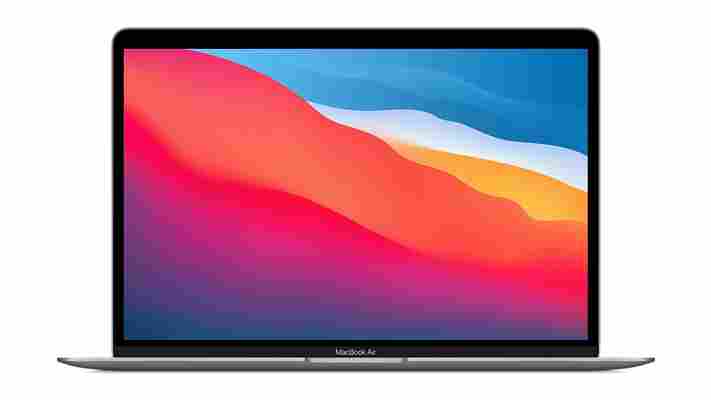
Apple rolled out their much-talked-about M1 silicon chip that’s so far been a real game-changer. And, the first laptop to receive it is the company’s thinnest and lightest, putting it on the list of the most exciting Apple laptops of recent years. With this new chip, the MacBook Air is better than ever, touting excellent performance alongside its brilliant battery life – without raising the price to keep it (fairly) affordable still. That makes it the best MacBook for students in 2022.
Read the full review: MacBook Air (M1, 2020)
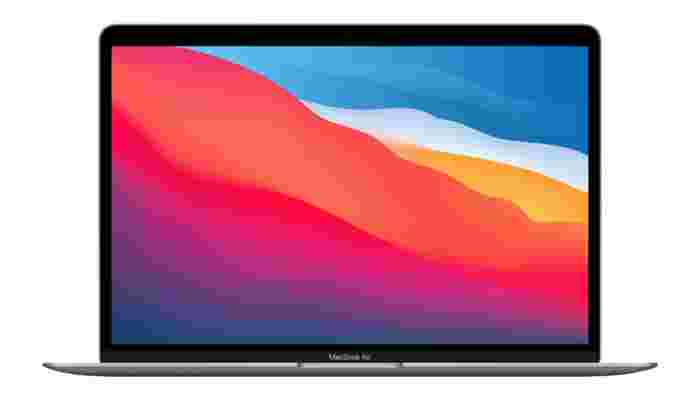
The MacBook Pro 13-inch (M1, 2020) may not have gotten a massive design overhaul, but what it lacks in that department, it makes up for big-time in performance and battery life. Thanks to Apple’s groundbreaking M1 chip, the new MacBook Pro 13-inch delivers excellent performance and exceptional battery life. Its performance is so impressive, in fact, that it can easily handle 4K - and even 8K - videos. Whether you’re in high school or in college, this is the best MacBook for students if you’re looking for a powerful laptop that keeps things small and lightweight.
Read the full review: MacBook Pro 13-inch (M1, 2020)
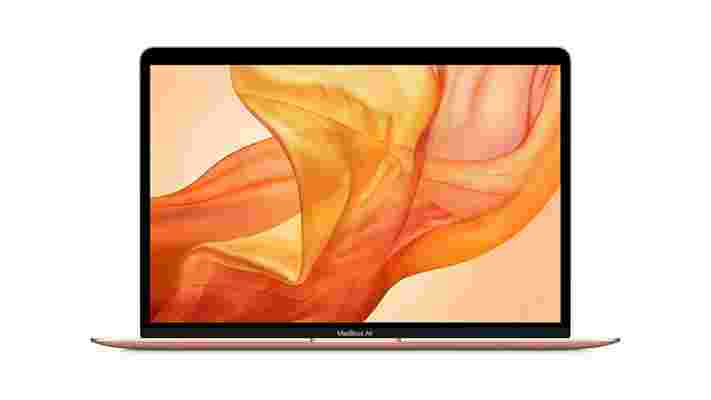
Apple’s thinnest and lightest MacBook is back in 2022 with a vengeance. Not only has it fixed a lot of the complaints with its predecessors – namely, that problematic keyboard is now gone, replaced by a drastically improved keyboard. But it also comes with new and more powerful internal components, even more storage space options, and a lower price of entry. There are a couple of things we’d do better, like the muted screen and the average battery life, but this model of the MacBook Air is better than anything we’ve seen from the line so far. And, it’s definitely among the best MacBooks to date.
Read the full review: MacBook Air (2020)
The MacBook Pro (13-inch, 2020)’s entry-level model may miss out on some of the lineup’s new toys. However, going for the higher-end configurations will get you new (and powerful) Intel processors and improved RAM speeds for better performance, all packed in the 13-inch incredibly svelte body. Apple rounds it all out with that incredible Magic Keyboard from the new 16-inch, finally getting rid of that problematic keyboard. Even if you don’t go for the 10th-generation Intel Core configurations, you might still appreciate the fact that all models come with more storage capacity for the same price as their predecessors. This is the best MacBook for college students right now.
Read the full review: MacBook Pro (13-inch, 2020)
While we are sad that Apple has retired the 15-inch MacBook Pro, we’re more than happy to see the MacBook Pro (16-inch, 2019) hit the shelves. As thin, light and sleek as ever, this doesn’t feel like a 16-inch behemoth. If you’re worried that this was going to be bulky and awkward to use, don’t be. Yet, despite its svelte frame, you’re still getting that extra real estate on that stunning display, as well as the latest and greatest components behind it. Apple then rounds those out with amazing (and loud) speakers and a much, much better keyboard. This is truly the best MacBook for film, design, and photography students.
Read the full review: MacBook Pro (16-inch, 2019)
Google Pixel 6 Pro vs iPhone 13 Pro Max: Android and iOS top phones do battle
The Google Pixel 6 Pro is out now and, inevitably, the first comparison that needs to be made is with Apple’s iPhone 13 Pro Max .
The parallels are obvious. These are the super-sized representatives of the two major smartphone platforms, Android and iOS. They’re also both stylish premium devices with outstanding camera systems and bespoke processing power.
So how do they compare? We’ve spent considerable time with both flagship phones by now, and here’s how we see it.
Google Pixel 6 Pro vs iPhone 13 Pro Max price and availability
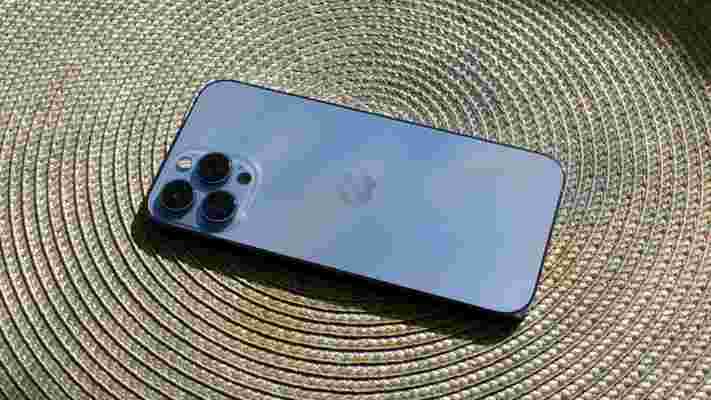
The Google Pixel 6 Pro hit stores on October 28, 2021. Prices start at £849 / $899 / AU$1,299 for 128GB. There’s also a 256GB model that costs £949 / AU$1,449 (around $1300) and a 512GB model in Australia for AU$1,599.
The iPhone 13 Pro Max was released on September 24, 2021. Prices start from $1,099 / £1,049 / AU$1,699 for the 128GB model, moving up to $1,199 / £1,149 / AU$1,869 for 256GB, then $1,399 / £1,349 / AU$2,219 for 512GB, and topping out at $1,599 / £1,549 / AU$2,569 for the new 1TB model.
As you can see, the Pixel 6 Pro is significantly cheaper than its chief rival. That’s an early win for Google.
Design
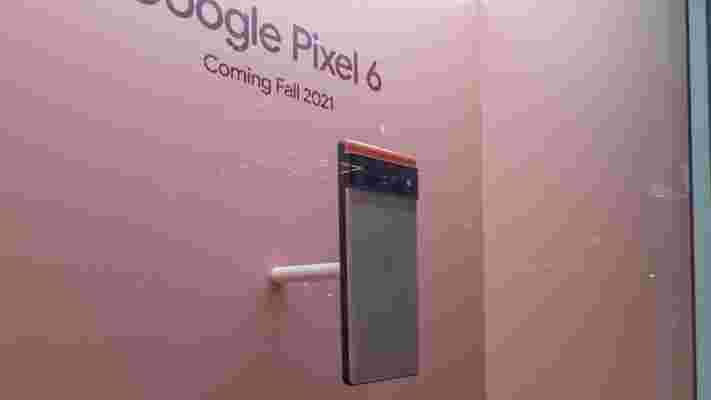
Both of these phones are stylish, but the Google Pixel 6 Pro has the freshest, and thus more eye-catching, design.
While the iPhone 13 Pro Max looks much the same as the iPhone 12 Pro Max , the Pixel 6 Pro doesn’t look quite like any phone that’s gone before it.
Its split two-tone rear panel (in Sorta Sunny, Cloudy White and Stormy Black) is particularly striking, while the full-width camera module provides a pleasingly symmetrical solution to the old problem of ever-expanding cameras.
As we said, the iPhone 13 Pro Max looks a lot like the iPhone 12 Pro Max, although that phone represented a major break from the design dead-end Apple had found itself in between the iPhone 6 and iPhone 11 eras.
In terms of a direct size comparison, both phones have their bragging points. At 163.9 x 75.9 x 8.9mm, the Google Pixel 6 Pro is narrower but also taller and thicker than the 160.8 x 78.1 x 7.65mm iPhone 13 Pro Max.
However, Apple’s super-sized phone is considerably heavier than its Google rival, weighing in at 238g vs 210g. Neither is what you’d call light, but the iPhone is downright heavy.
Both phones have an IP68 dust and water resistance rating. While the iPhone 13 Pro Max has a super-tough ceramic shield covering the display, Google’s Pixel 6 Pro uses off-the-shelf (but still tough) Gorilla Glass Victus glass.
The iPhone 13 Pro Max utilizes premium, shiny stainless steel on its flat rim, and comes in Graphite, Gold, Silver and Sierra Blue. They’re all stylish, if a little muted for some tastes.
Apple has reduced its iconic display notch by 20%, though the Google Pixel 6 Pro has a much less intrusive hole punch notch for its selfie camera. Apple’s notch, of course, houses a Face ID authentication system, which Google attempted to emulate and swiftly abandoned with the Pixel 4 .
All in all, it’s a design win for the Pixel 6 Pro, if only because it doesn’t quite look like any other phone on the market.
Display
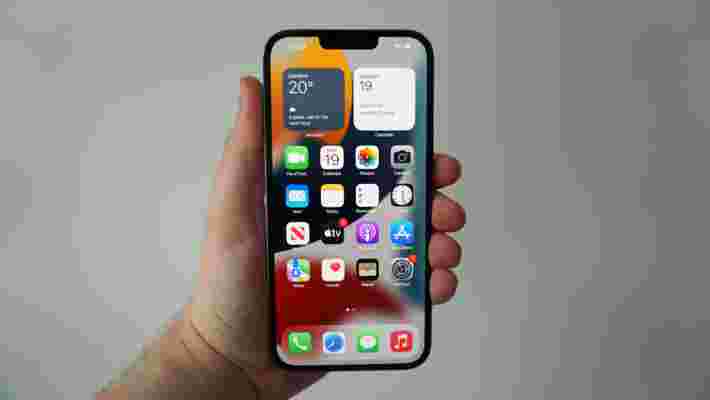
Both of these phones utilize 6.7-inch OLED displays with fluid 120Hz refresh rates.
Those heightened refresh rates are made possible by the same LTPO technology, which in both cases enable the displays to scale right down to 10Hz when the scenario dictates. It’s a great battery-saving feature.
Where the displays differ is on sharpness. The iPhone 13 Pro Max display has a 2778 x 1284 resolution, while the Google Pixel 6 Pro tops it with a 3120 x 1440 QHD+ resolution.
It can’t match the iPhone 13 Pro Max for brightness, though. Apple’s handset can hit 1000 nits in typical usage, and 1200 nits in HDR tasks. Google hasn’t supplied its own figures, but it’s clear to see that it doesn’t get as punchy in outdoor conditions.
Overall, these are two very closely matched displays. We’ll have to go hands-on to determine which is best.
It’s worth noting that Google goes with an in-display fingerprint sensor versus Apple’s Face ID facial authentication method. There are pros and cons to both systems, but it must be said that the Pixel 6 Pro’s fingerprint sensor isn’t the most reliable we’ve used.
Cameras
After a dominant spell, Google has fallen somewhat behind in the camera stakes. It’s always had outstanding algorithms, but its hardware was starting to get a little stale with the Pixel 5 .
The Google Pixel 6 Pro goes some way to rectifying that. It’s led by a whopping 1/1.31-inch 50MP wide sensor accompanied by an f/1.85 aperture.
This is backed by a 12MP ultra-wide, and a 1/2-inch 48MP telephoto sensor capable of 4x optical zoom. The wide and telephoto sensors enjoy both optical and electronic image stabilization.
It faces a stiff challenge in the iPhone 13 Pro Max, which is quite possibly the best camera phone on the market right now. It achieves this title through a trio of 12MP sensors for wide, ultra-wide, and telephoto.
All are larger than before, sucking up even more light, while Apple has brought its sensor-shift stabilization system across from the iPhone 12 Pro Max. The wide sensor has a huge f/1.5 aperture, so this thing really is a nighttime warrior.
The Pixel 6 Pro also takes great nightime shots, but you have to keep really still for a prolonged period to get the best results.
The iPhone’s ultra-wide sensor, meanwhile, also doubles as a macro shooter, enabling you to get as close as 2cm from your subject. As for the telephoto lens, that can zoom in to 3x. That’s an improvement over the 2.5x iPhone 12 Pro Max, but the 4x Pixel 6 Pro has it licked.
Both camera systems bring a host of new software tricks to the table. The Google Pixel 6 Pro’s Motion mode is designed for taking creative long exposure shots of moving subjects. More consequential – if less showy – is Real Tone, which enables more natural-looking skin tones.
Magic Eraser, meanwhile, lets you remove unsightly photo bombers and other annoyingly messy background details from your shots. The Pixel will even suggest which elements to remove.
The iPhone 13 Pro Max adds Photographic Styles , which let you fundamentally change the tone and warmth of a scene without making things look weird. You can even give your shots an extra dose of Pixel-like contrast if you wish.
Both cameras add intriguing new tricks on the video side of things, too. The Pixel 6 Pro features Speech Enhancement, which can pick up speech even when there’s a lot of background noise.
The iPhone 13 Pro Max brings Cinematic Mode , which lets you apply Portrait-like bokeh effects to your footage - even after it’s been shot. It’ll also track the gaze of your subjects and adjust the focus accordingly.
ProRes support arrived with the iOS 15.1 update. This adds support for the high-end video codec that the professionals use, enabling you to adjust more in post-production.
Specs and performance
The Google Pixel 6 Pro’s custom Tensor chip doesn’t even approach the power of Apple’s A15 Bionic chip from a conventional standpoint.
A Geekbench 5 multi-core score of 2760 for the Pixel falls way short of the iPhone 13 Pro Max’s 4549. That’s a huge difference.
Benchmarks also reveal that the iPhone 13 Pro Max runs on 6GB of RAM, which is half that of the Pixel 6 Pro. We know better than to make too much of such a disparity by now, though. Android and iOS are simply too different in the way they handle memory for this to signify much of anything.
What really matters here is that both phones feel buttery smooth and super-responsive in all of the usual practical applications. From app-switching to gaming, we can’t criticize either of them.
We should also note that Google’s Tensor chip is more focused on machine learning than raw (and largely superfluous) horsepower. It’s what powers all those clever camera tricks, among other things.
In terms of storage, both phones offer 128GB as standard. But while both also offer a 256GB option, the iPhone 13 Pro Max adds 512GB and 1TB models on top of that. You can only get a 512GB Pixel 6 Pro Max in Australia, for whatever reason.
Both of these phones are 5G-ready, and both also contain their own types of ultra-wideband chips for accurate ranging and spatial orientation.
Battery
The Google Pixel 6 Pro packs in a 4,905mAh battery, while the iPhone 13 Pro Max has a 4,352mAh cell. That might sound as if it’s advantage Google, but as we’ve already noted, these two phones handle their resources very differently.
The iPhone 13 Pro Max gave us the best battery life ever from an iPhone. We were able to go a whole day of intensive usage and still have around a third of a tank left.
Conversely, battery life is one of the weaker elements of the Pixel 6 Pro. It’s not enough to put you off a purchase as it can last for a full day of typical usage, but more stringent use will have you sweating, unlike the iPhone.
Neither of these phones is the more remarkable when it comes time to recharge. The Pixel 6 Pro wins out with its support for up to 30W wired charging, as the iPhone 13 Pro Max only goes up to 23W. But neither company bundles a charger in the box. When rival phones from OnePlus and Xiaomi are supplying 65W bricks (and beyond) as part of the package, it’s not at all impressive.
Apple’s phone supports 15W Qi wireless charging, while Google’s only goes up to 12W. If you buy a Pixel Stand, however, that figure bumps up to 23W.
Software
Here’s where the real distinction lies. Both phones have highly compelling hardware, but the most significant point of contrast is likely to be that one phone is the champion of iOS 15 , while the other is the champion of Android 12 .
In terms of excitement, Google’s Android 12 with its new Material You UI is certainly the fresher of the two. That largely comes down to where both operating systems are in their development cycle, but the point remains.
Material You provides a vibrant, colorful interface, with a smart system that takes your chosen wallpaper and adjusts the whole system-wide theming to suit.
Some of the bold widgets that Google has been showing off are simply stunning, too.
Apple’s iOS 15, by contrast, is a fairly subtle revision of what’s gone before it. Apple has upped its widget game, however, after shunning or siloing them for years. Whisper it, but these two operating systems have been getting closer and closer in recent years.
Apple’s App Store is still the best of its kind in terms of consistency, quality, roster, and security. But Android users will swear by the greater flexibility and customization potential of their chosen OS.
Takeaway
Google has supplied a compelling alternative to the iPhone 13 Pro Max. It’s got a distinctive design, the fluid and punchy display, the custom power, and the enhanced camera chops to compete with Apple’s flagship. It’s quite a bit cheaper, too.
However, in pure hardware terms, we’d still give the iPhone 13 Pro Max the edge. It’s more powerful, has a better all-round camera system, and enjoys notably superior stamina.
Ultimately, though, this is likely to come down to which software ecosystem you’re already subscribed to. Are you an Android person or an iOS person? You can make your choice accordingly with confidence.
You might also want to check out the iPhone 12 Pro vs iPhone 11 Pro or iPhone 12 Pro vs iPhone 12 Pro Max comparison.